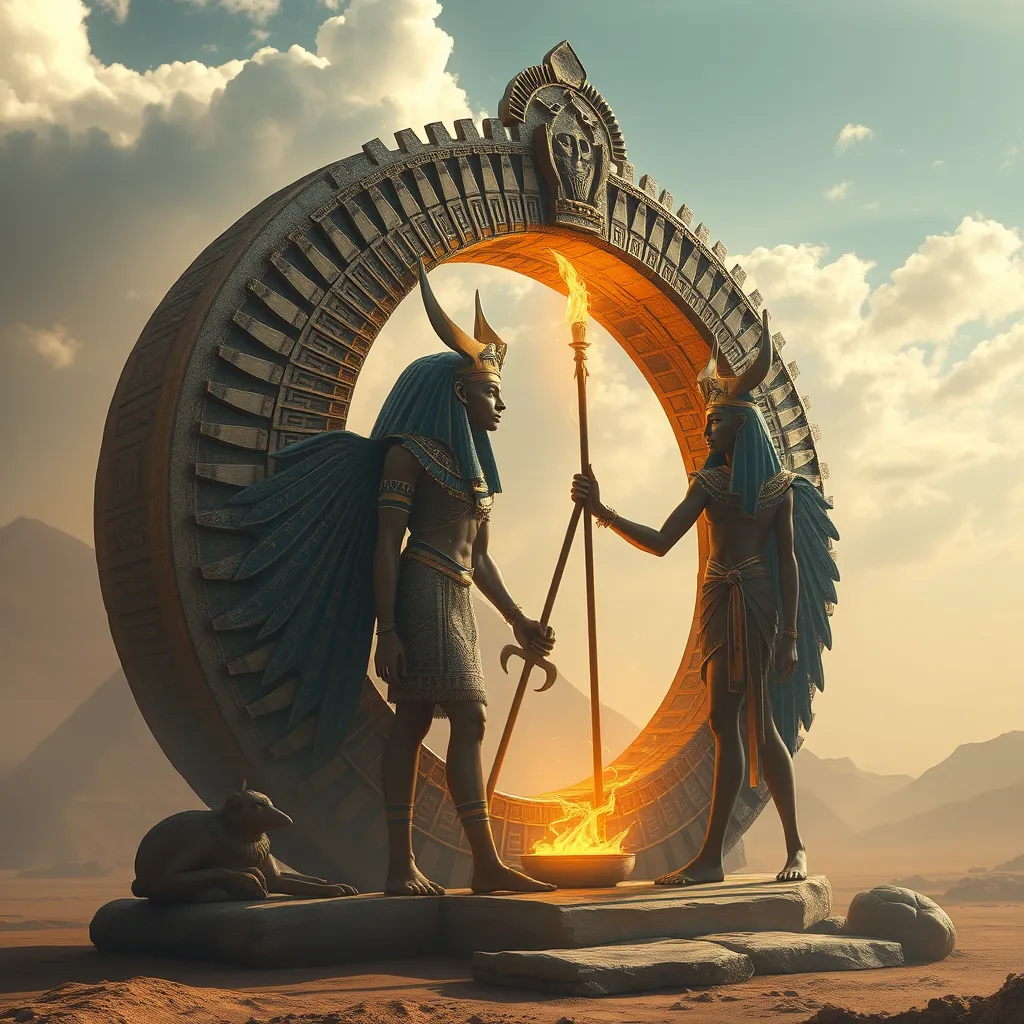The Duat: The Eternal Cycle of Life and Death
I. Introduction
The Duat, a term steeped in mystery and significance, refers to the ancient Egyptian realm of the dead. It was not merely a place of darkness and despair; rather, it was a complex and vital component of the Egyptians’ understanding of life, death, and the afterlife. The Duat played a crucial role in the belief systems of ancient Egyptians, shaping their rituals, myths, and views on existence. This article will explore the multifaceted nature of the Duat, focusing on its connection to life, death, and the eternal cycle of rebirth.
II. The Concept of the Duat in Ancient Egyptian Cosmology
The Duat is often depicted as a vast, dark expanse filled with rivers, mountains, and various landscapes. It was believed to be located beneath the earth, a realm that the deceased had to navigate in their journey to the afterlife.
- Description of the Duat as the realm of the dead: The Duat was envisioned as a labyrinthine world through which souls would travel after death. It was filled with both dangers and sanctuaries.
- Role of the Duat in the cycle of life and death: The Duat represented a necessary passage that every soul had to undertake, symbolizing the transition from physical existence to spiritual eternity.
- Mythological references to the Duat in Egyptian texts: Ancient texts such as the Pyramid Texts and the Book of the Dead provide rich descriptions of the Duat, detailing the challenges faced by the deceased and the deities that governed this realm.
III. The Journey Through the Duat
The journey through the Duat began at the moment of death. The deceased would encounter various trials and tribulations that tested their worthiness for the afterlife.
- The process of dying and entering the Duat: Upon death, the soul would leave the body and begin its journey through the Duat, often guided by deities.
- Key deities associated with the Duat: Important figures include Osiris, the god of the afterlife; Anubis, the god of embalming and the protector of graves; and Thoth, the god of wisdom who recorded the results of the judgment.
- The challenges and trials faced by the deceased: The deceased had to navigate through various obstacles, including serpents and other malevolent entities, to reach the final judgment.
IV. The Role of Judgment and the Weighing of the Heart
Central to the experience in the Duat was the judgment process, a critical moment determining the fate of the deceased.
- Explanation of the judgment process: After traversing the Duat, the soul would stand before Osiris for judgment.
- The significance of the Feather of Ma’at: In this process, the heart of the deceased was weighed against the Feather of Ma’at, symbolizing truth and justice. A balanced scale indicated a pure heart.
- Consequences of the judgment outcome: If the heart was lighter than the feather, the soul was granted eternal life in the Field of reeds. If heavier, it faced annihilation, devoured by Ammit, the devourer of the dead.
V. Symbolism and Artifacts of the Duat
The Duat’s influence extended beyond the spiritual realm into art, architecture, and daily practices of the ancient Egyptians.
- Representation of the Duat in Egyptian art and architecture: The Duat was often depicted in tomb paintings and carvings, illustrating various scenes of the afterlife journey.
- Importance of funerary texts: Texts such as the Book of the Dead were created to assist the deceased in navigating the Duat, containing spells and instructions.
- Rituals and offerings designed to aid the deceased: Funerary rituals, including offerings of food and goods, were performed to ensure the deceased’s comfort and success in the Duat.
VI. The Duat and the Cycle of Rebirth
The Duat was intrinsically linked to the concept of rebirth, emphasizing the cyclical nature of existence.
- Connection between the Duat and the concept of rebirth: The journey through the Duat and the subsequent judgment were seen as a precursor to rebirth into a new life.
- The role of the Duat in the agricultural cycle and seasonal changes: The Egyptians frequently associated the Duat with the Nile’s flooding cycle, symbolizing death and renewal.
- Myths related to resurrection and renewal: The myth of Osiris, who was killed and resurrected, encapsulates the essence of death leading to new life, echoing the beliefs surrounding the Duat.
VII. The Duat’s Influence on Modern Culture and Spirituality
The legacy of the Duat continues to resonate in contemporary culture and spiritual beliefs.
- Legacy of the Duat in literature and popular media: The concept of the Duat has inspired various works of fiction, films, and even video games, reflecting its enduring appeal.
- Influence on contemporary beliefs about life after death: The themes of judgment and the afterlife found in the Duat have influenced modern spiritual practices and beliefs.
- Modern interpretations and adaptations of the Duat concept: Contemporary interpretations often explore the symbolism of the Duat in discussions about mortality, existence, and spiritual journeys.
VIII. Conclusion
In summary, the Duat represents a profound and intricate aspect of ancient Egyptian culture, embodying their understanding of life, death, and the afterlife. Through the exploration of the Duat, we gain insights into the beliefs that shaped a civilization and their views on existence. The enduring significance of the Duat serves as a reminder of the universal questions surrounding life and death, reflecting the timeless quest for understanding our place in the universe. As we delve into these ancient beliefs, we can appreciate their relevance and influence in today’s world, where the mysteries of existence continue to intrigue and inspire.




